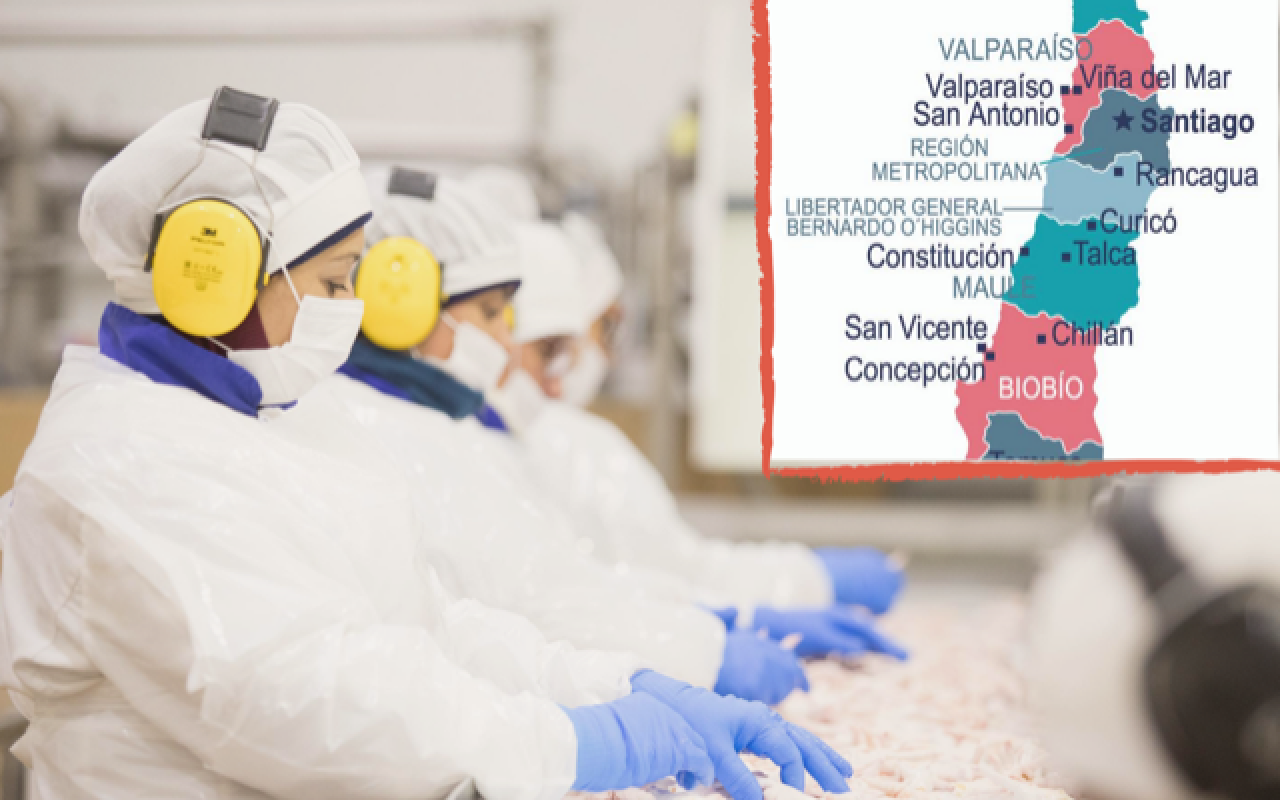
Pork industry: Key for Chile´s economic growth and a source of employment for over 25 towns
Given the current situation, the last few months have demanded an unprecedented effort from every sector that supplies essential products both in Chile and abroad. This is the case of companies from the pork industry, which are mainly located in Chile’s south central region, namely in rural areas of the O’Higgins, Maule and Metropolitan Regions. […]

Given the current situation, the last few months have demanded an unprecedented effort from every sector that supplies essential products both in Chile and abroad. This is the case of companies from the pork industry, which are mainly located in Chile’s south central region, namely in rural areas of the O’Higgins, Maule and Metropolitan Regions. “The sector is comprised of companies that know about hard work. For more than three decades, they have been searching for and implementing new health, safety, and biosecurity standards to meet the requirements of the most demanding markets where Chile exports,” says Juan Carlos Domínguez, President of ChileCarne, the Chilean Meat Exporters’ Association. Over the past few months, in addition to preserving and perfecting those standards during a pandemic, they have focused on the well-being of their workers and the communities surrounding their production facilities.
Juan Carlos Domínguez, Executive President of ChileCarne, the Chilean Meat Exporters’ Association, states that: “Since its inception, the Chilean pork industry has set its sight on the most demanding world markets, and today, 70% of production is exported.” Domínguez also highlighted that the United States Department of Agriculture (USDA) lists Chile fifth in the ranking of global pork exports, only surpassed by powerhouses such as the European Union, the United States, Canada, and Brazil. It represents a major challenge for a country of 19 million people.
According to ChileCarne’s numbers, the pork industry provides work to over 24,000 people via 12,000 direct and 12,500 indirect jobs. Most of them are located in rural sectors of Chile’s central region. Regarding the industry suppliers, more than 11,200 are companies from various Chilean regions and 69% of them are small businesses. This means that the industry has an impact on more than 100,000 people through its suppliers.
Maxagro, for example, had 1,200 workers at the beginning of this year, and during these months, it hired 200 additional workers, a reality that started a few years ago: “In just one region alone, where we have been operating since 2014, the workforce has increased by almost 70% since then,” says Pablo Espinosa, Maxagro’s General Manager.
Meanwhile, Coexca is one of the main sources of employment in the Maule Region. Along with the expansion of the local wine industry, today the company is recognized as a key economic driver for the development of the area and its inhabitants. In total, the company and its subsidiaries provide direct and indirect jobs for more than 1,000 families. Over the last 18 years, they have helped reduce the high unemployment rate of the Region.
Agrosuper helps stimulate the Chilean economy, and for 65 years it has prioritized hiring employees from the places where it operates, as this allows the company to contribute to the growth of the regions where it is present. The largest number of its workers are located in the O’Higgins Region, where it has operations in 14 municipalities, accounting for 59.3% of the company’s total staff.
